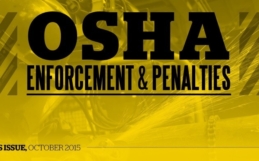Environmental Liability
Incidental Asbestos Exposures
A general contractor entered into an agreement to demolish an existing dormitory and construct a new building at the facility. The owner provided the GC with asbestos surveys for the buildings to be demolished. Those surveys identified some asbestos within the building, but did not disclose asbestos on the piping between the walls. The GC hired an abatement contractor to remove the identified asbestos. After the abatement contractor reported that it had completed the abatement, an excavation and demolition contractor was hired by the GC and demolition operations commenced.
Three months later, the demolition contractor claimed that it had discovered suspicious materials in the building debris. The demolition contractor suspended operations and initiated asbestos testing, but did not notify the GC. Three days later, the GC was cited by the state department of environmental quality for various asbestos violations. The GC was also issued a mandate that required it to perform remediation and remove all waste materials.
The GC then contracted with the abatement contractor to perform the remediation while the state environmental regulators monitored the project site and the waste site. Because the asbestos was mixed with the other demolition debris, more than 7,000 cubic yards of asbestos containing materials were removed and transported to a licensed landfill. The GC incurred uninsured losses of about $600,000 as of result of this incident and the other contractors incurred significant defense expense.
Potential Exposures
Asbestos was very widely used in the U.S. for decades. Many are not aware of just how widespread the use of asbestos has been, and the significant risk that incidental disturbance of asbestos represents. For example, asbestos can currently be found in:
Mechanical Products: including gasket cloth, hoses, wrapping of hot air ducts or pipes, and asbestos paper air ducts or lining of paper ducts.
Cement Products: including asbestos cement materials used in wall partitions, fireproof layers on insulated board, cement materials used in brick type siding, lining for bleaching and
other tanks and vats, exterior building sheathing and asbestos cement pipes used for carrying water, sewage, gas, and special liquids.
Insulation Products: including asbestos walls and floors, high temperature insulation, lining of laboratories, cooling chambers and other rooms, acoustical work & noise insulation and einforced aluminum foil.
Construction Products: including asbestos millboard used as fireproof wallboard, asbestos used as a covering for ceilings over boilers, furnaces, water heaters, smoke stacks, etc. for fire protection and corrugated decorative wallboards.
Plumbing Products: including asbestos underground conduits, sewer pipe, tubing, paper gaskets and asbestos cement pipes used for gas vent pipes such as plumbing vents.
Electrical Products: including molded compositions for wire coverings, millboard for electric switch boxes, cement pipes used for conduits, asbestos lamp sockets, rheostat backings, switch parts, arc deflectors, resistance mountings and other electrical products.
Roofing Products: including paper asbestos felt roofing paper and asbestos paper protected metal roofing.
Flooring Products: including asphalt floor tiles, floor linings and various adhesives.
Misc. Products: including padding prison cells, padding in pianos, paper linings of filing cabinets, soldiers helmets, electric appliances and millboard used in dry cleaning machines.
Providing Coverage
All pollution policies are not created equal. When evaluating the extent of the coverage being offered it is critical to keep in mind a few key coverage differences:
Some carrier pollution forms have an asbestos exclusion built into their base forms – it is critical to pay careful attention to endorsement language that gives back some coverage.
A few exclude the “existence” of asbestos in any form.
Some exclude naturally occurring asbestos. Asbestos is a naturally occurring mineral, and excavation contractors can be found liable just for disturbing it.
Some provide coverage for asbestos, but exclude it “in, on or applied to any building”.
Others extend coverage as long as asbestos conditions are “inadvertently” disturbed.
And then there are others that leave the definition of pollutants broad, and remain silent on asbestos.
Source: www.ucpm.com
For more information visit ENVIROMENTAL PROTECTION or contact a Southwest Risk Management Insurance Specialist at 1-866-924-7976 (SWRM).









